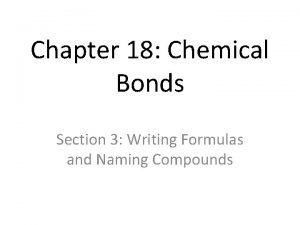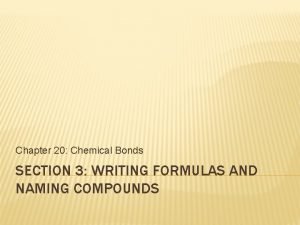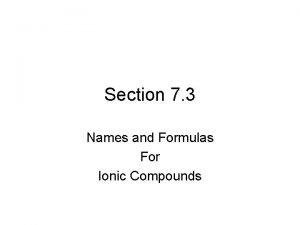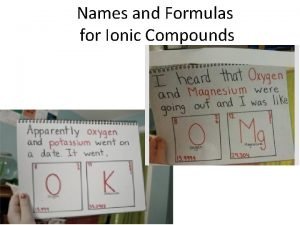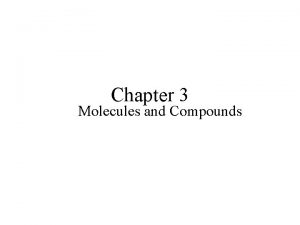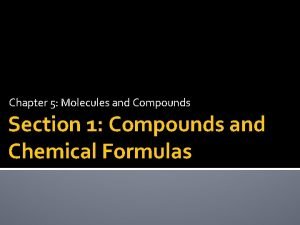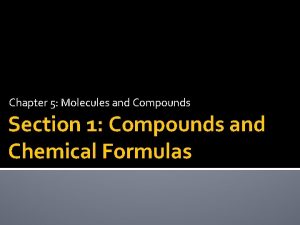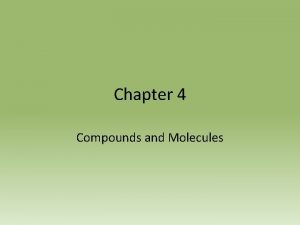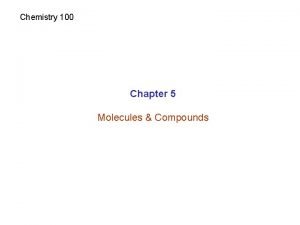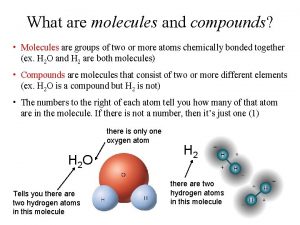Chapter 19 Molecules and Compounds Section 19 1













- Slides: 13

Chapter 19 Molecules and Compounds Section 19. 1 Bonding and Molecules – Part 2

Types of Chemical Bonds Recall that atoms gain, lose, or share e to gain 8 valence e. so that they become stable.

Ionic Bonds - formed when atoms gain or lose electrons. Ex: Na has 1 valence = e

When Na loses that electron, its 2 nd E. L. becomes full and stable with 8 e. sodium atom sodium ion Atoms with an electrical charge are called ions.

Chlorine has 7 valence electrons. If Cl gains 1 electron, its valence shell will be full and stable. chlorine atom chlorine ion

Opposites attract, so… Are these two ions likely to bond?


Covalent Bonds Most atoms share electrons to gain an octet. Covalent bonds are formed when e are shared.

Covalent Bonds, cont. Covalent bonds can form between 2 different types of atoms or between 2 or more atoms of the same type.

Diatomic molecules: – covalently bonded atoms of the same type. Exs: H 2 Cl 2 F 2 I 2 O 2 Br 2 N 2

How can you tell whether a bond is ionic or covalent? In GENERAL: Ionic – metal / nonmetal Covalent – 2 nonmetals

Electronegativity e Sometimes are shared unequally in covalent bonds. Electronegativity – attraction atom has for shared pair of e.

Electronegativity Elements in Group 17 have highest electronegativity. Elements in Groups 1 and 2 have lowest electronegativity.
 Organic molecules vs inorganic molecules
Organic molecules vs inorganic molecules Substance
Substance All compounds are molecules
All compounds are molecules Molecules vs compounds
Molecules vs compounds Venn diagram of ionic covalent and metallic bonds
Venn diagram of ionic covalent and metallic bonds Chemistry in biology section 2 chemical reactions
Chemistry in biology section 2 chemical reactions Chapter 6 section 1 atoms elements and compounds
Chapter 6 section 1 atoms elements and compounds Ionic compounds
Ionic compounds Chemistry chapter 7 ionic and metallic bonding
Chemistry chapter 7 ionic and metallic bonding Prefixes for hydrates
Prefixes for hydrates Section 1 atoms elements and compounds
Section 1 atoms elements and compounds Section 3 writing formulas and naming compounds
Section 3 writing formulas and naming compounds Section 3 names and formulas for ionic compounds
Section 3 names and formulas for ionic compounds Section 3 names and formulas for ionic compounds
Section 3 names and formulas for ionic compounds









